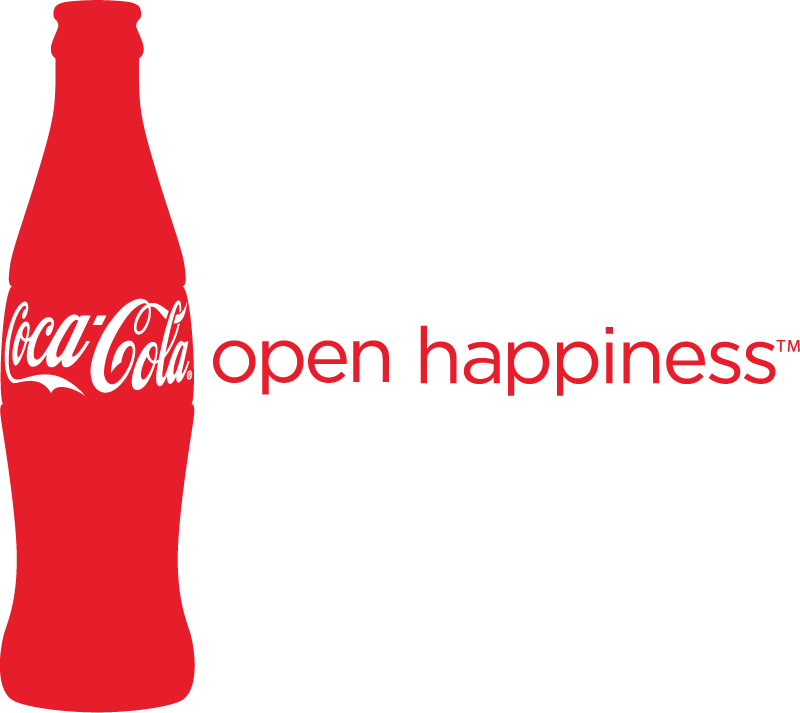We’ve spoken about marketing strategies in the past and have concluded that there are numerous marketing approaches and concepts, each suited for a different type of business.
Choosing and investing in the wrong marketing strategy can cost a business a ton of money, which is why it is important to correctly determine what kind of strategy is most suitable for your company.
Industries change all the time, as does marketing, which adds another challenge to this process.
In recent years, a new marketing concept has appeared, with the aim of helping businesses remain on top of their game in an oversaturated market.
This is the so-called holistic marketing concept.
What is the holistic marketing concept?
The holistic marketing concept is based on the philosophy of holism, which can be summarized with a single thought of Aristotle’s: ‘’The whole is more than the sum of its parts’’.
This concept is anything but new in philosophy, and when it comes to marketing, marketers started using it fairly recently.
According to this concept, a business is not a combination of departments that should work separately.
Instead, all of its parts and departments should strive towards the same goal, and marketing should be incorporated in all of them.
The holistic marketing concept sees marketing as an important element that everyone who works in a company should be involved with.

What is the goal of the holistic marketing concept?
We already mentioned that the holistic marketing concept thinks that all parts of a business should have the same goal. That goal involves creating a great customer experience and building a positive brand image.
Additionally, by having all parts of a business share the same goal, the holistic marketing concept helps the business send the same message to all its customers.
If a business behaved one way on social media and presented itself in ads differently, this would send a mixed message to the customers, which is something you absolutely don’t want to do.
Just imagine if an employee of a super serious business joked and insulted people on the official social media profile.
For some brands, this approach works, but only if their entire concept is less serious. Think of Wendy’s, all of their social media profiles and ads have the same jokey theme to them.

If a business implements the holistic marketing concept correctly, it greatly contributes to four very important things:
Brand building
By providing top-notch customer service, the business that uses this strategy ensures that its customers are happy with the company and have nice things to say about it.
They’re helping the business build their brand by telling their friends about it, and writing positive reviews and comments online.
Consistency
Since the goal of the holistic marketing concept is to make sure that the entirety of the business and all of its parts are sending a unified message to the customers, it helps maintain the consistency of the business, which matters a lot if you want to remain in the market.
Customers aren’t very fond of changes, so consistency is everything.

Efficiency
The holistic marketing approach greatly helps increase the efficiency of a business since all parts of it are on the same track, therefore the communication between them is easier, which saves time.
Effectiveness
Creating a great customer experience and brand building are long term goals, which allows the business to focus on a few big things, instead of dozens of smaller ones, which increases the effectiveness of this strategy.
How does a business send a unified message to their customers?
In order for the holistic marketing concept to be implemented correctly, all activities and actions need to be carefully planned out, because they need to strive towards the same goal.
Here’s another example – think of Coca-Cola and their ads. All of them are about happiness, which is no coincidence, it is one of the strongest emotions.
But how does a business achieve this?
There are 4 components, or marketing forms, to this process:
- relationship marketing
- integrated marketing
- internal marketing
- and socially responsible marketing
Let’s see what each of them entails.
1. Relationship marketing
Since this strategy is about marketing is an element that is present in all parts of a business, and marketing is all about knowing your customers, the business that utilizes this strategy needs to know their target audience really well.
This includes what they like, dislike, as well as their interests, wishes, wants, and needs. Only by knowing their customers can a business establish a relationship with them and make their brand a part of their lives.
Wendy’s realized that the jokes and memes resonated with their audience (if you check their Twitter, you’ll see that all of their tweets have 1.000+ likes, some even over 200.000) so they kept this approach.

The importance of a good customer – business relationship
In business, a successful relationship between the business and customers is everything. It keeps customers coming back for more, which increases profits and it also gets them to recommend the business to other people, which helps build the brand image and reinforce the brand.
So, by having a good relationship with their customers, businesses ensure that their customers remain loyal to them and choose them over their competition.
Therefore, the main focus of relationship marketing isn’t selling products; it’s actually customer satisfaction and retention, as well as building customer loyalty, all long-term goals.
The way they’re achieved is through the clever use of emotion in marketing. Have you ever seen an ad that made you happy or nostalgic, and when you purchased the product that was advertised?
The mastery behind this marketing form is that we’re often not even aware of these emotions, and they influence our subconsciousness.
Nike’s brilliant advertising
A great example we used in the past are Nike’s ads. They’re designed in such a way that watching them pumps you up and motivates you, and makes you want to be as active as the people in their ads.
This then influences you to go outside and buy a pair of their shoes, maybe today or in a month, when you’re taking a casual stroll and suddenly remember how the ad made you feel. The emotions their ads evoke are related to success and self-improvement, and judging by Nike’s ever-lasting success, it works.
2. Integrated marketing
This form of marketing is the second component of the holistic marketing concept and is related to the aforementioned unified message that the business sends to its customers.
This strategy ensures that all marketing parts of a business work together, which includes departments and employees who deal with paid media, earned media, and owned media.
Let’s see what each of these entails.
- Paid media involves marketing you pay for, such as pay-per-click marketing and influencer marketing.
- Earned media, as the name suggests, are the things you earn from your customers, such as reviews and comments.
- Owned media presents the media you own: like your website and social media profiles.
3. Internal marketing
So far, we spoke about the relationship between the customer and the business and the unified message the business needs to send to their customers, but what about the people who make this happen?
Internal marketing is all about the employees and the reason for it is good customer experience. According to this marketing form, the customer’s opinion of a business isn’t influenced only by the products.
It is also influenced by all the interactions they have with the business, which are mostly employee-customer interactions, hence the importance of internal marketing.
So, by providing intensive training to employees, a business ensures that they know everything they need to when a customer has a question or needs help with something.
Apple – a great example of internal marketing
Think of Apple and its employees. If you’re having issues with your Apple product, you can take it to their store and their highly capable employees with solving them.
If this weren’t the case and they hired just anyone and didn’t train them properly, you would think twice before purchasing another product of theirs.

4. Socially responsible marketing
Even though you probably don’t know it by name, you’ve seen dozens of examples of this marketing type.
Socially responsible marketing aims to attract customers who want to make a difference with their purchases. Think of products where a part of the proceeds goes to a good cause or products that are made responsibly.
There are 4 marketing-related concepts that are involved in this specific type of marketing: social marketing, environmental marketing, cause-related marketing, as well as socially responsible buying – all concepts that are related to the environment and well-being of the society.
For successful digital marketing campaigns
What is structure of holistic marketing?
Now that we’ve seen what this concept is and what it entails, let’s move onto its framework.
The structure of this marketing approach consists of three stages: analysis and identification, creation, and delivery.
Analysis and identification
This stage is all about the analysis of new opportunities, values, and the target audience. During it, the business learns about their customer’s wants, needs, and wishes.
Creation
During this phase, the business comes up with the strategy they’re going to use.
By using all the information they gathered from the previous phase, the marketing managers place themselves in customers’ shoes and try to see the business from their perspective.
By thinking about how the customer thinks, they learn how to appeal to them, and satisfy their wishes and needs, as well as provide good customer care.
Delivery
This stage consists of customer relationship management, internal resource management, and business partner management. It is primarily about the deliverance of value to the customers, which then helps build customer loyalty.
Holistic marketing examples
Here are 2 holistic marketing examples, so you can see how these two companies implemented this marketing strategy.
1. Coca-Cola’s Open Happiness campaign
Starting off with perhaps the most famous example of holistic marketing, which is Coca-Cola.
They had a ton of slogans throughout the years, but in 2009, they used the slogan ‘Open Happiness’ for the first time. It lasted until 2015 and is today one of the most popular slogans ever.

When it comes to holistic marketing, Coca-Cola had a genius idea to make happiness their goal in 2009.
They included the word in all of their ads and had a song performed by famous musicians called Open Happiness.
Additionally, they named their trucks Happiness Trucks, and vending machines were Happiness Machines that ‘delivered doses of happiness’.
If you look at their recent ads, you’ll see people smiling, being happy, and enjoying each other’s company, which is what the brand is all about.
2. Heineken’s unique store
In an attempt to show the world that they are more than just a beer brand, in 2008, Heineken opened a large store, called Heineken The City.

Instead of focusing on the beer, they focused on the user experience instead. The store featured its iconic green and had a modern interior design.
Their customers could purchase merch, such as t-shirts, hats, socks, and much more.
It was immediately a huge hit, with over 300.000 visitors during the first year.
Wrapping up
The holistic marketing concept is relatively new, but it has already become super popular. Its focus on good customer experience and brand building are especially appealing to businesses and its benefits of consistency, efficiency and effectiveness are a great bonus.
Hopefully, you’ve learned something about this complex and extremely beneficial marketing approach, and thank you for reading!





